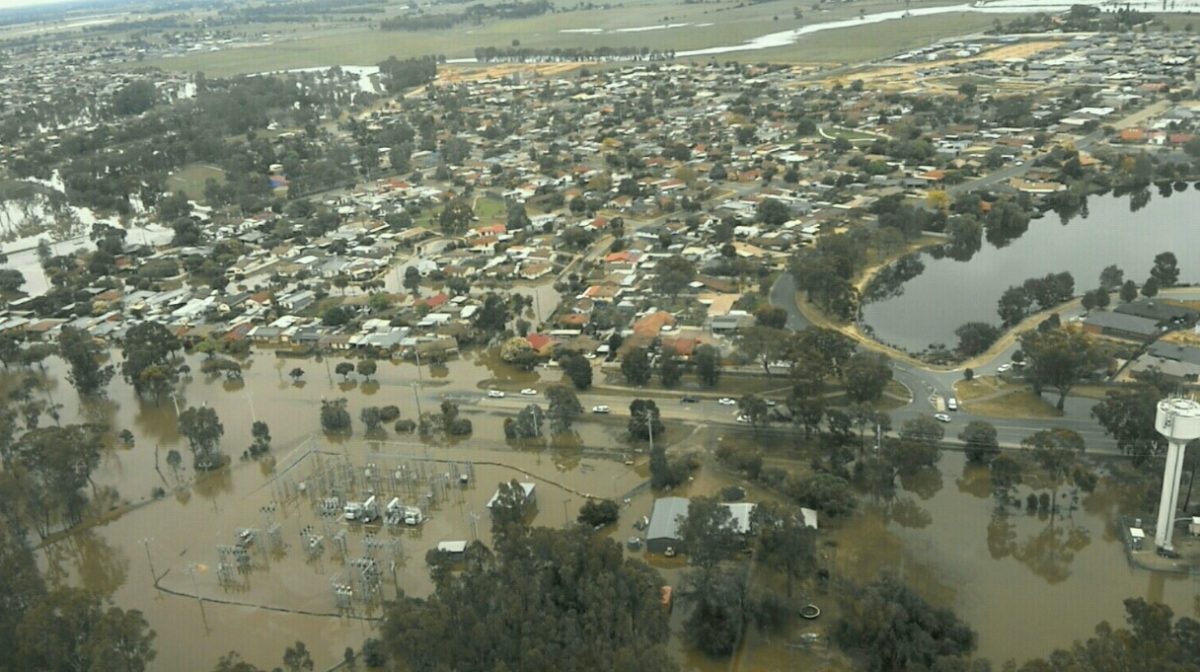The authorities, including Campaspe Shire Mayor Chrissy Weller, have described the flood crisis in northern Victoria as a one-in-1,000-year event. But after similarly misleading descriptions were already given to flood events in both New South Wales and Queensland in 2022, Australians are realising that extreme weather events are increasing in frequency.
As extreme weather events become increase, energy networks the world over are becoming increasingly vulnerable. On Oct. 16, rising flood waters from the Goulburn River breached a levee and swamped Powercor’s Mooroopna zone substation leaving 5,954 customers without power until it could be restored on Oct. 19.
However, the transition to renewable energy presents an enormous opportunity for increased resilience.
Following the lead of governments in regions similarly susceptible to extreme weather events, such as California, Victoria’s Labor government announced $7.5 million in funding for solar-supported resilience in at-risk communities.
Solar support
Victoria’s Minister for Energy Lily D’Ambrosio said the funds would be invested in back-up power systems comprised of batteries and rooftop solar in 24 towns hit by major storms in 2021. By concentrating solar back-up systems on community buildings, the government hopes they can act as relief hubs in the event of prolonged blackouts.
“With climate change set to increase the frequency and intensity [of] storms and bushfires, we’re developing energy resilience solutions to protect Victorian communities during extreme weather events,” says D’Ambrosio.
Among the towns identified by the government are the City of Greater Bendigo, Macedon Ranges Shire, Moorabool Shire, Mornington Peninsula Shire and Yarra Ranges Shire.
D’Ambrosio reiterated continuing renewable energy investment for communities across the state for “securing energy supply, driving down power bills and slashing emissions to combat climate change and mitigate its impact on Victorians.”
Microgrids
One of the most promising avenues for solar-supported energy resilience are grid-connected microgrids. These clusters of renewable energy and battery energy storage act as little power stations which can supply electricity to remote communities on vulnerable parts of the network should an outage occur.
In Victoria the state government is investing $9.8 million to form microgrids with a mix of solar, batteries, heat pumps and generators in the towns of Mallacoota, Omeo and Corryong.
This content is protected by copyright and may not be reused. If you want to cooperate with us and would like to reuse some of our content, please contact: editors@pv-magazine.com.









By submitting this form you agree to pv magazine using your data for the purposes of publishing your comment.
Your personal data will only be disclosed or otherwise transmitted to third parties for the purposes of spam filtering or if this is necessary for technical maintenance of the website. Any other transfer to third parties will not take place unless this is justified on the basis of applicable data protection regulations or if pv magazine is legally obliged to do so.
You may revoke this consent at any time with effect for the future, in which case your personal data will be deleted immediately. Otherwise, your data will be deleted if pv magazine has processed your request or the purpose of data storage is fulfilled.
Further information on data privacy can be found in our Data Protection Policy.